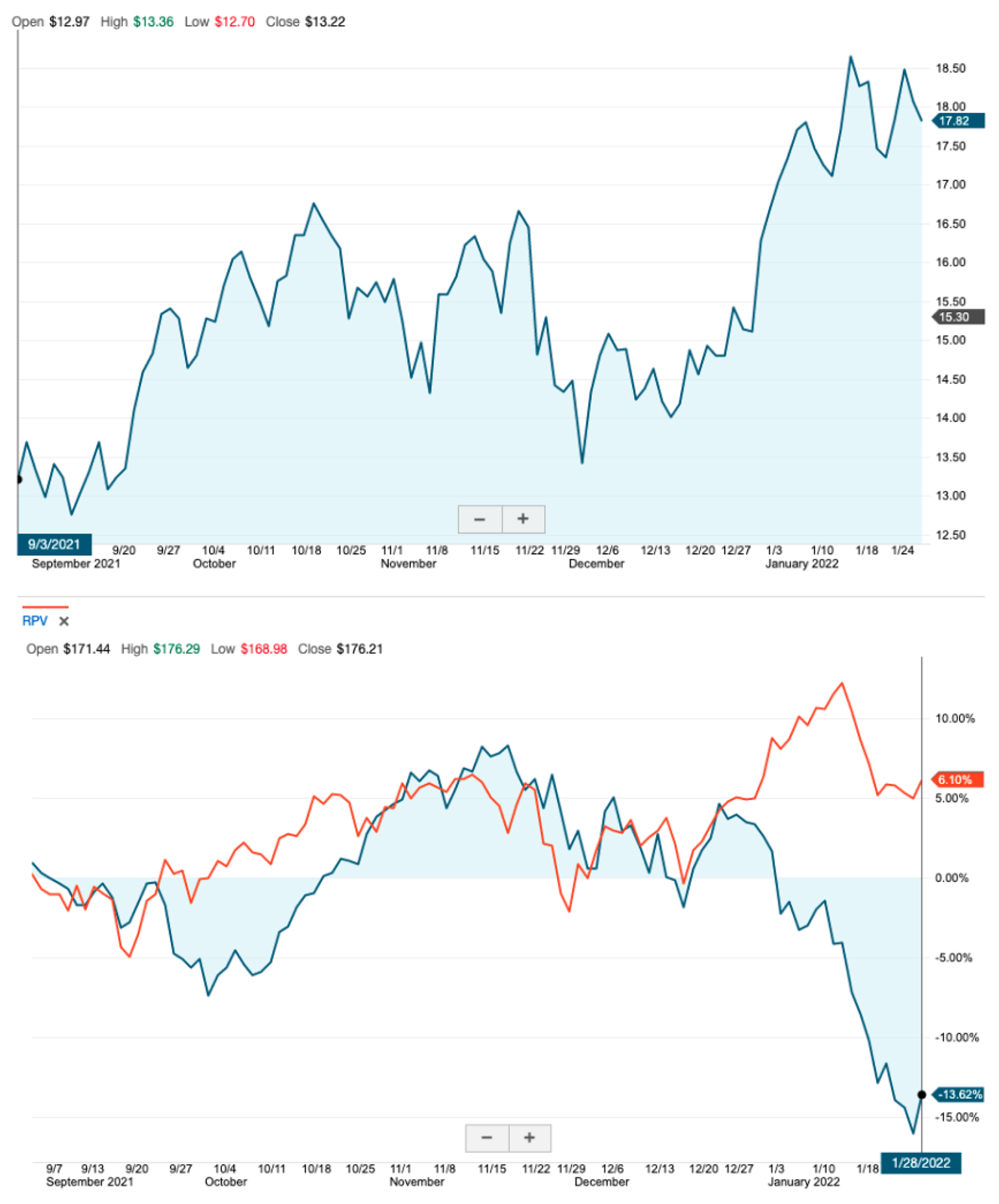Since the start of the year, the battle between growth and value is in full force. It actually began last quarter and picked up steam since December. I have written in the past how important bond yields are when it comes to valuing a company. The sharp rise in the widely followed 10 year US Government Bond yield has had a significant, negative impact on the valuation of mega-cap technology companies. That we know. The question is will the strong performance in “value” stocks continue longer than it did at the start of 2021?
What is considered a “growth stock” and what is a “value stock”?
- A growth stock is any share in a company that is anticipated to grow at a rate significantly above the average growth for the market. These stocks generally do not pay dividends. This is because the issuers of growth stocks are usually companies that want to reinvest any earnings they accrue in order to accelerate growth in the short term. When investors invest in growth stocks, they anticipate that they will earn money through capital gains when they eventually sell their shares in the future.
- A value stock refers to shares of a company that appear to trade at a lower price relative to fundamentals such as dividends, earnings, cash flow or sales making it appealing to value investors.
Value Lived to Fight Another Day
At the beginning of 2021, there was a feeling that the pandemic was starting to wane which led to a rapid rise in interest rates in anticipation of tightening of money supply and the potential for rising inflation. Accordingly, the higher rates led portfolio managers to shift to value stocks. Examples include insurance, consumer staples, healthcare services, telecommunications, auto manufacturers and energy, to name a few. But as 2021 unfolded, so did another surge in the pandemic. The interest rate on the 10 year bond peaked mid-March at 1.72%. As covid surged again, so did bond prices driving the rate back down to 1.17%. That took the wind out of the rally in value stocks leaving growth stocks to again take the lead. This year, the scenario is playing out differently and value stocks are surging back, stronger than in early 2021. The first of the two charts below is the yield in the 10 year US Government bond starting 9/3/2021 to 1/28/2022. The second chart shows the performance in % of two exchange traded funds (ETFs) that track the S&P Pure Value Index (in orange) and the S&P Pure Growth Index (in blue).

Lining up the graphs as I have done, you’ll notice the strong inverse correlation with the rise in the 10 year yield in the upper graph and the decline in the growth index in the lower graph. At the same time, you see the positive correlation between the rising 10 year yield and the rising value index. I expect these trends to continue as the year unfolds albeit in a very choppy fashion meaning it won’t be without rapid swings in sentiment as we are experiencing now.
Valuation Matters – Finally
As a firm, we have struggled with the extreme rise in valuations of technology companies, a vast number of which are operating at a loss in earnings. When you see such rapid rises in stock prices, you can expect at some point a “reversion to the mean”. In other words, shares of companies that trade at valuations significantly above their fundamental valuations will eventually come back to earth. In the past two to three years, there has been a record number of initial public offerings (IPOs) of high profile technology companies at out of this world valuations. Almost all of them were losing money and most continue to do so. Most had low amounts of revenue which only added to indications of ridiculously high valuations. At some point one could reasonably expect such valuations to decline as many of the companies fail to perform up to expectations leading to much lower revenue growth assumptions and a longer time horizon in terms of becoming profitable.
On a short term basis, trying to predict when high flying stocks will drop in value is not an investment strategy that has often been rewarded over the years. Our goal is pay attention to trends in the market over a longer term horizon and not react to wild swings in the markets on almost a daily basis of late. That said, we are gradually shifting equity exposure more toward value stocks and have been over the last couple of months. As I mentioned above, I believe this will be a that will continue this year and likely into 2023.
Inflation – The Elephant in the Room
The Federal Reserve is way behind the curve in fighting inflation, so much so that a former colleague of mine, Steve Roach, who was the global economist for Morgan Stanley, quipped that they can’t even see the curve. Given the recent, wild fluctuations in the markets, it seems others are beginning to agree. Financial talking heads are fanning the flames of rising rate fears in a variety of ways. To me, the prospect of rising rates is not new information but the speed in which the Fed may increase the fed funds rate is news.
Importantly, the first meeting of the Federal Reserve Board for 2022 was held on Wednesday, January 26. At that meeting, they decided to leave the fed funds rate unchanged even though some market participants were expecting a hike. Fed Chairman Powell spoke right after the meeting to explain their decision. I spoke with Steve following Powell’s comments. In his view, a hike in rates today might have sent a message to the markets that the board may be “panicking.” Instead, he was encouraged by Powell’s comments that the Board’s focus will be more on inflation for the time being rather than shrinking the Fed balance sheet. Powell hinted that fed funds rate hikes could start at the March meeting and possibly at meetings scheduled for the balance of the year. But indicating that reducing liquidity in the markets is a secondary concern is good news for stocks broadly. The enormous amount of money through Quantitative Easing that has been injected into the markets since the pandemic is a primary reason why stocks have done so well.
Wrapping Up
Plowing through economic data and interest rate analysis is not the most exciting thing but it does keep me in tune with market sentiment and expectations. It’s very safe to say that vacillating sentiment and expectations are the root causes of the extreme volatility we have seen since the start of the year. I don’t see it calming down soon so we need to stay focused and not be overly reactionary in these times.
